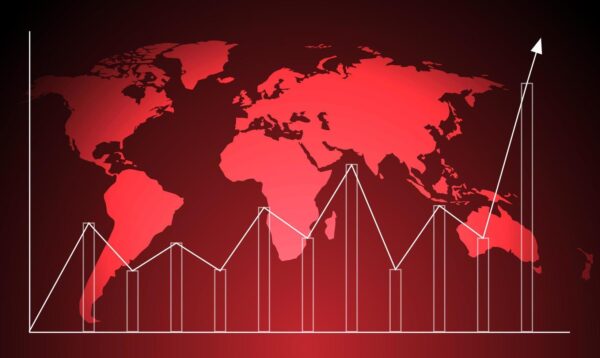Inflation, a concept that resonates across the economic landscape, has recently stirred discussions as the United States witnessed a staggering 7.5% inflation jump over a span of 40 years. The implications of this remarkable surge are multifaceted, affecting individuals, businesses, and the overall economy. In this comprehensive article, we delve into the intricacies of this event, its implications, and potential strategies to navigate the evolving economic landscape.
US Inflation: A Historical Perspective
The phenomenon of inflation is nothing new; economies around the world have grappled with its effects for centuries. The US, too, has had its share of inflationary episodes, but the recent 7.5% jump over four decades demands our attention. Let’s take a closer look at the historical context, causes, and consequences of this substantial increase.
The Seeds of Inflation
The roots of inflation can often be traced back to a blend of factors, including monetary policies, consumer behavior, and global market dynamics. In the case of the US, a combination of factors such as changes in money supply, geopolitical events, and shifts in demand and supply patterns has contributed to this phenomenon.
Unraveling the Causes
Several factors have catalyzed the 7.5% inflation jump in the US over 40 years. RajkotUpdates News unveils these pivotal causes:
- Monetary Policies: The Federal Reserve’s approach to managing interest rates, money supply, and stimulus packages significantly impacts inflation rates. Over the past four decades, the balance between these factors has evolved, leading to inflationary pressures.
- Global Market Dynamics: Globalization has interconnected economies, making them susceptible to fluctuations in commodities, currencies, and trade. As the US economy interacts with the world, international events can trigger inflationary ripples.
- Supply Chain Disruptions: Disruptions in supply chains, whether due to natural disasters, political instability, or pandemics, can disrupt the flow of goods and services, leading to increased prices.
- Consumer Behavior: Shifts in consumer preferences, purchasing patterns, and attitudes towards saving or spending can influence demand and supply equilibrium, thereby affecting inflation.
Implications for Individuals and Businesses
The ramifications of a 7.5% inflation jump extend far beyond the realm of economics, touching the lives of individuals and businesses alike.
Impact on Individuals
For individuals, inflation translates into higher costs of living. Essential expenses such as housing, education, healthcare, and groceries become more expensive, potentially eroding purchasing power. To mitigate this impact, individuals often need to reassess their budgeting strategies and explore ways to increase income streams.
Effects on Businesses
Businesses face their own set of challenges in an inflationary environment. Operating costs rise due to increased prices for raw materials, transportation, and labor. To maintain profitability, businesses may need to adjust pricing, optimize supply chains, and innovate to remain competitive.
Strategies to Navigate Inflation
In the face of rising inflation, individuals and businesses can adopt various strategies to weather the storm and emerge stronger:
1. Diversify Investments
Investors can diversify their portfolios to include assets that historically perform well during inflation, such as real estate, commodities, and inflation-protected securities.
2. Flexible Pricing Models
Businesses can explore dynamic pricing models that adjust in response to market fluctuations, allowing them to pass on increased costs to consumers more efficiently.
3. Skill Enhancement
Individuals can invest in skill development and education to remain relevant in changing job markets, potentially leading to higher earning potential.
4. Risk Hedging
Businesses can use financial instruments to hedge against currency fluctuations, commodity price hikes, and interest rate changes, reducing their exposure to inflationary risks.
FAQs
Q 1: How does inflation impact retirement planning?
A: Inflation erodes the value of money over time, meaning that what might seem like a substantial retirement fund today may not be sufficient to cover expenses in the future. Incorporating inflation into retirement planning is crucial to ensure financial security.
Q 2: Are there any winners in an inflationary economy?
A: While inflation often brings challenges, certain sectors like real estate and commodities can benefit. Real assets tend to appreciate in value during inflation, potentially benefiting investors.
Q 3: How can governments counter inflation?
A: Governments can employ measures such as adjusting interest rates, controlling money supply, and implementing fiscal policies to manage inflation rates.
Q 4: Can inflation be completely eliminated?
A: Complete elimination of inflation is unlikely and may not even be desirable. Moderate inflation can stimulate economic growth and discourage hoarding, fostering a healthier economy.
Q 5: How can individuals protect their savings during inflation?
A: Individuals can consider investing in assets that historically hold value during inflation, like precious metals and inflation-protected securities.
Q 6: Does inflation affect all goods and services equally?
A: No, inflation affects different goods and services at varying rates. Some items, like healthcare and education, tend to experience higher inflation rates compared to others.
Conclusion
As the US grapples with a 7.5% inflation jump over four decades, individuals and businesses alike must adapt to the changing economic landscape. While challenges arise, opportunities for innovation, growth, and resilience also emerge. By understanding the causes, consequences, and strategies to navigate inflation, individuals and businesses can proactively shape their financial destinies even amidst a shifting economic environment.



